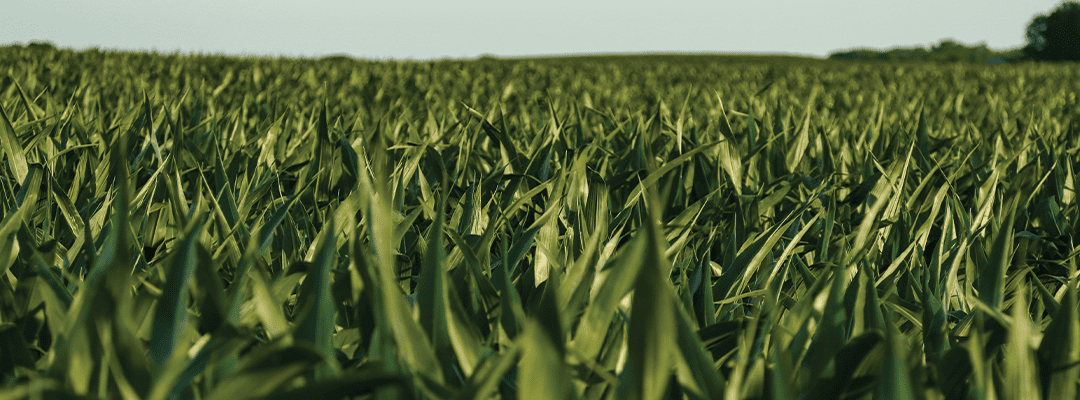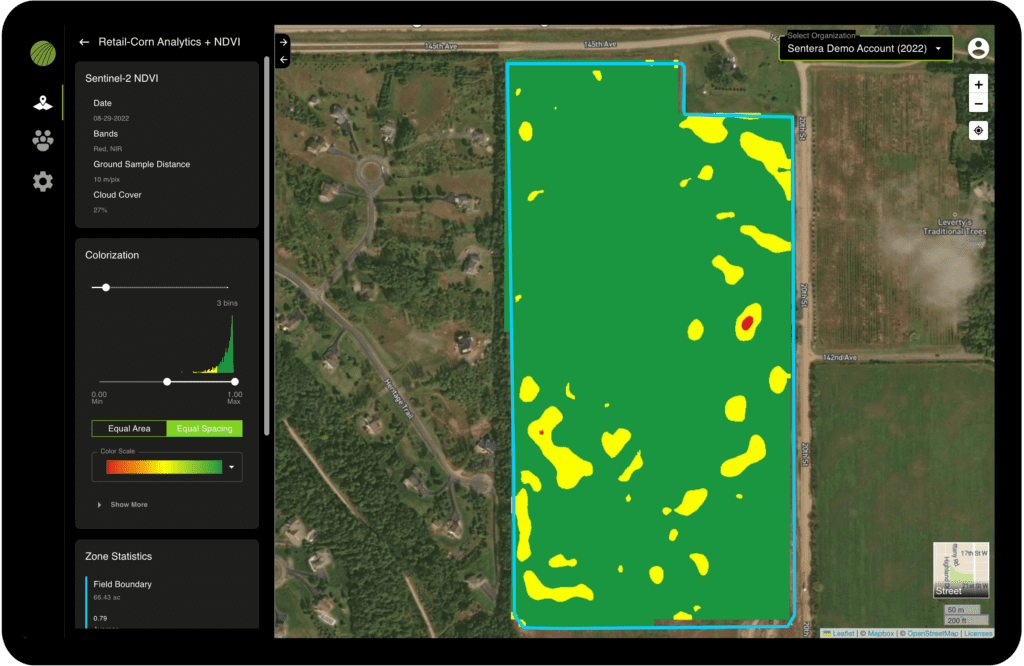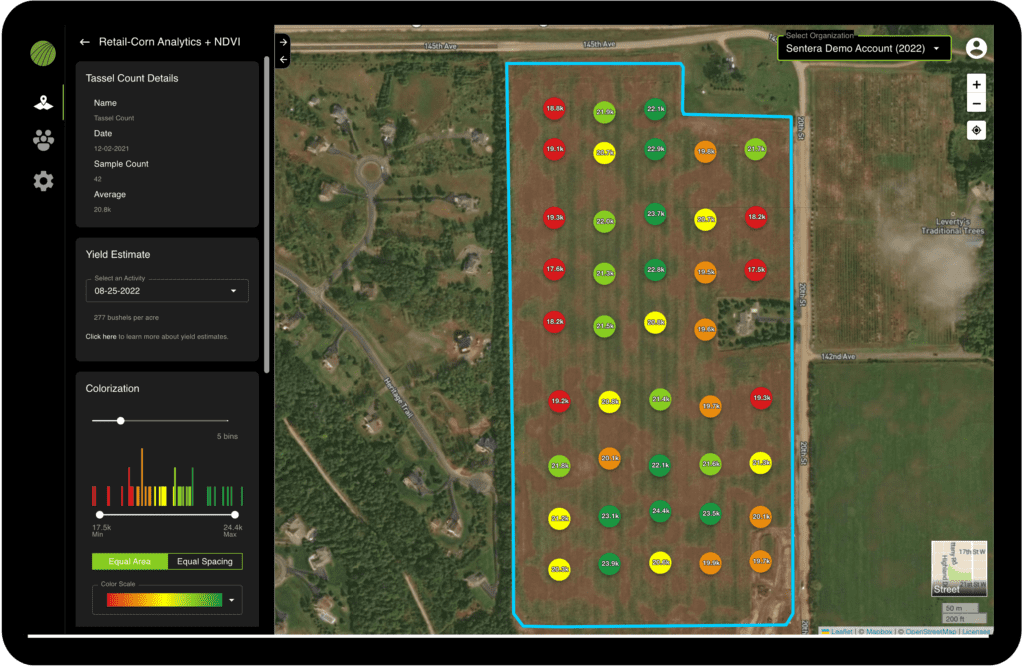When it comes to understanding crop health and performance, finding the time and resources to scout serves as one piece of the puzzle. What’s more important? Delivering these insights in a timely manner ensures that the collected data can be acted upon.
To be successful, optimizing field-level visibility requires a focus on leveraging precision agriculture tools that help to drive efficiency while increasing productivity. The cherry on top is doing these things without sacrificing data quality or timeliness.
Ready to get started? In this blog post, we’ll highlight key elements to get the visibility you need to inform boots-on-the-ground scouting.
Take Advantage of Remote Sensing
Before even stepping foot in the field, today’s technology solutions make it easy to understand what’s happening. Using an ag software platform that’s powered by satellite, weather, and soil data, for instance, can give a good indication about what’s happening within your field.
Satellite data – which captures RGB, NDVI, or NDRE imagery – can indicate crop health throughout season, taking different indicators into consideration depending on the time of year.
NDVI and NDRE capture how light reflects off plants based on chlorophyll levels, which will vary based on plant health. RGB, NDVI, and NDRE all offer specific benefits depending on your use case:
RGBFull Season Full field mapping and analysis |
NDVIEarly-to-mid Season Density and greenness of field vegetation |
NDREMid-to-late Season Chlorophyll content and total biomass |
Field-level data can also include soil data, which indicates pH balances and nutrient breakdowns to help inform key inputs, depending on what crop performance may look like throughout the season.
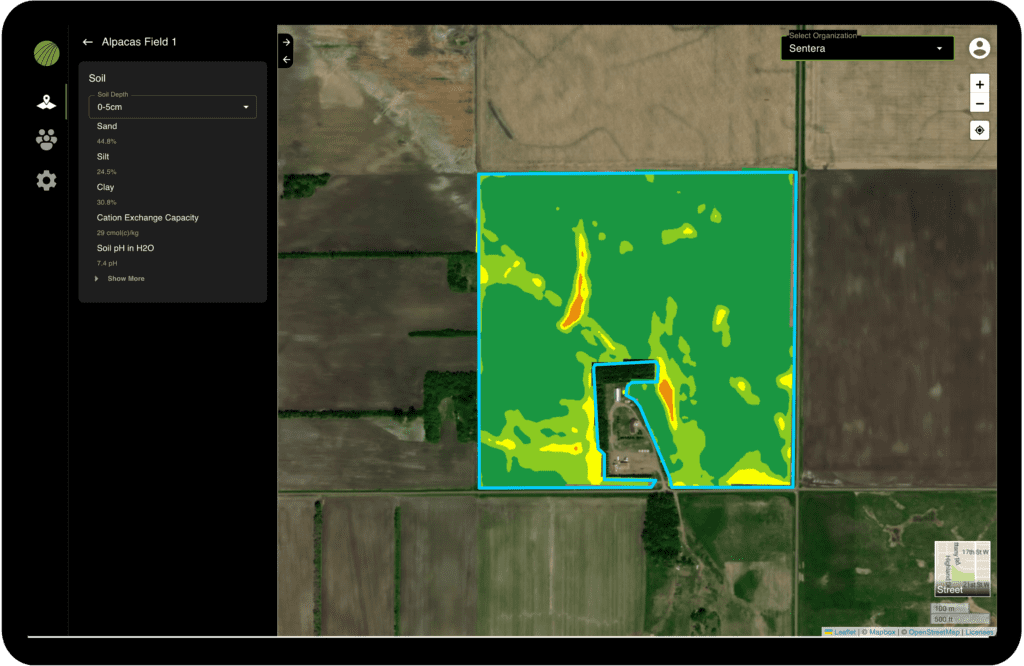
Weather information, which provides insight into historical information and upcoming weather to inform scouting priorities. Taking it one step forward, weather information can also inform Notifications.
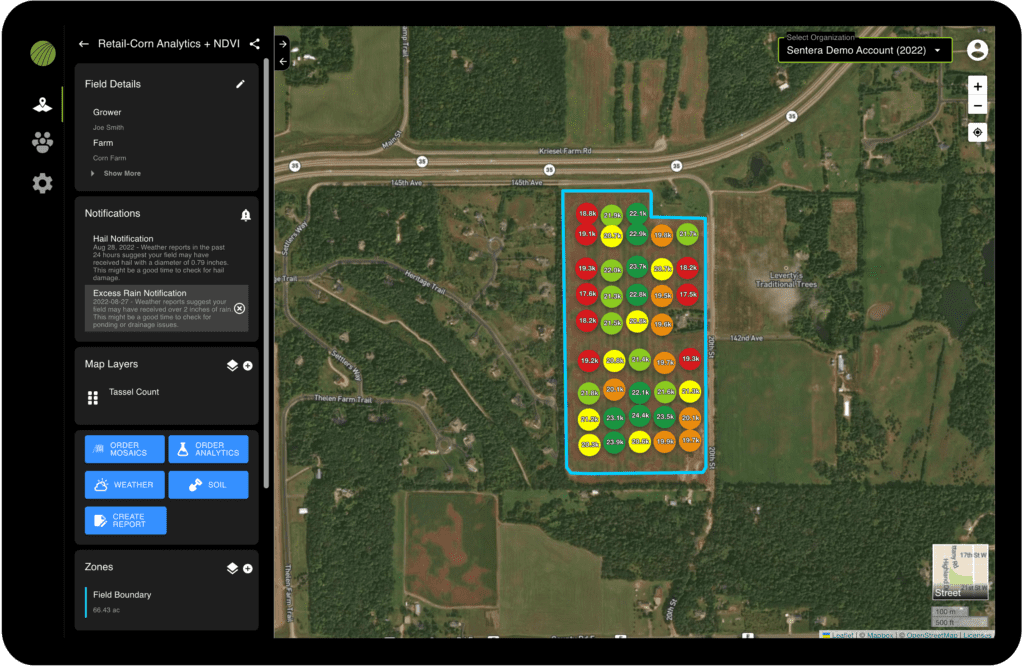
Notifications are gold for informing scouting activities in the field. It can help to identify where you should focus your time to help the areas that have the most issues,. Key notifications range from identifying emergence and stage for corn; or can highlight weather issues, like hail, wind or frost.
Use Data to Inform Scouting Activities
Remote sensing only gets you so far. Satellite data provides a good indication of high-level performance and can provide insight on where to focus time. From there, it may be beneficial to drill into problem areas by capturing high-resolution imagery to pinpoint areas of focus and optimize scouting within the field.
Flying an ag drone system can quickly get full coverage of a field to validate satellite data, providing detailed insight into performance – plant by plant. While high-resolution imagery can provide more accurate RGB, NDVI, or NDRE maps, the imagery can be transformed into detailed analytics to get data points to understand performance at a deeper level.
Stand Count, for instance, can be captured with images throughout the field that, when paired with a machine learning platform, are translated into counts across every single acre.
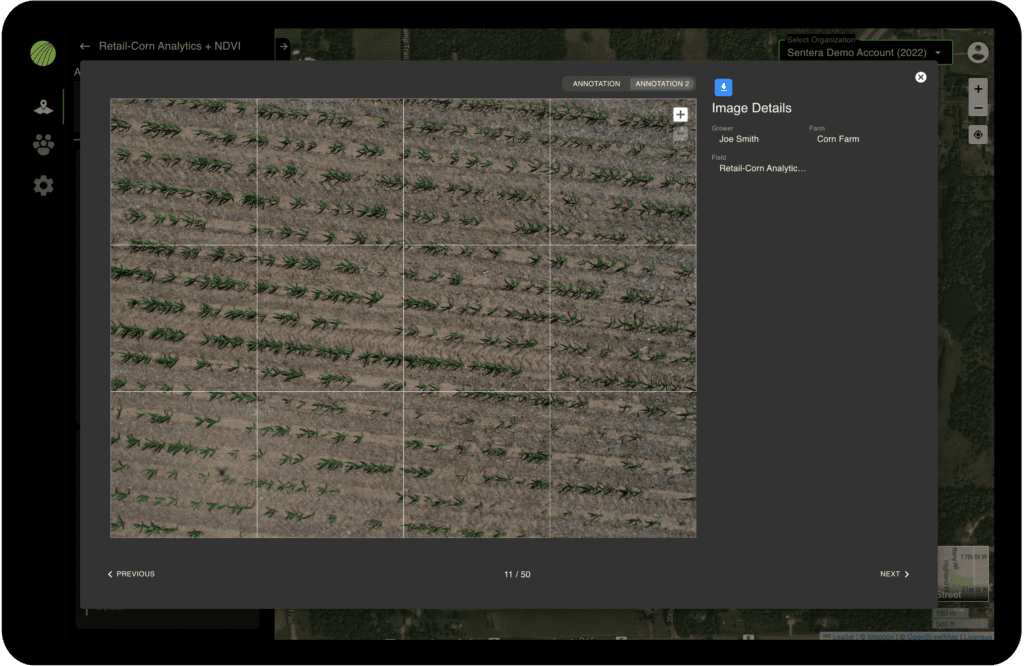
The result? A clear map that indicates plant populations early in the season – helping to inform scouting activities to understand key problem areas and inform key inputs or decisions, like whether to replant.
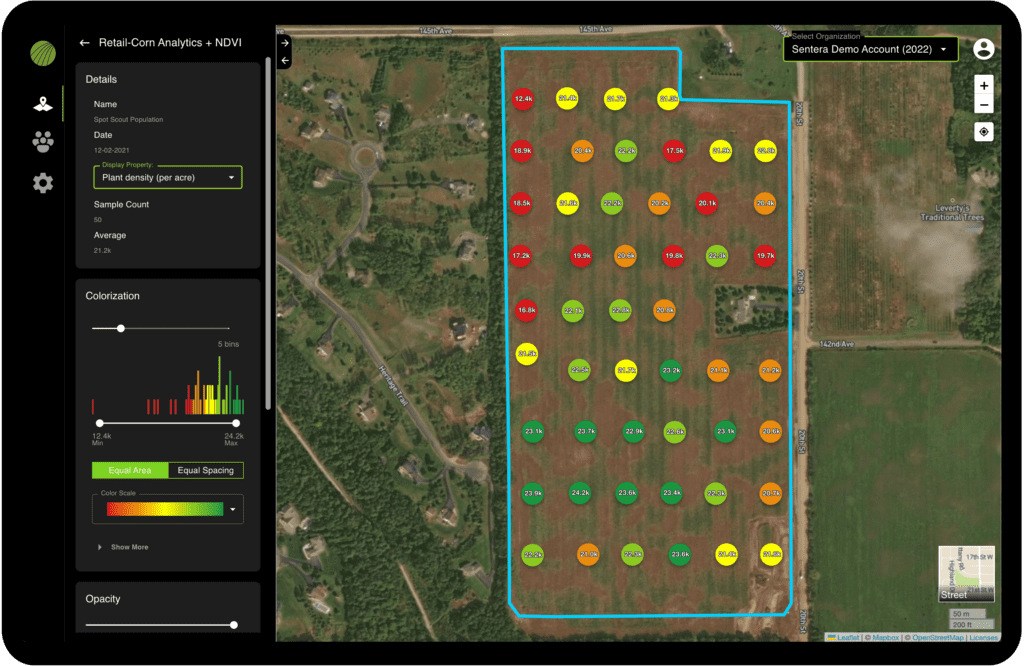
What’s more, viewing this data in a platform like FieldAgent means that you can quickly create and export Prescriptions to apply treatments via uploading into machinery.
Drive Productivity & Efficiency
Manual methods require extensive time and resources – both of which are in a shortage as we look at labor shortages, rising costs, and supply chain bottlenecks.
Leveraging precision ag technology tools means that you can empower teams to work more efficiently, while capturing more data to help advance decision making.
For instance, data capture and analytics have been demonstrated to reduce labor costs by up to 30%. Using an ag drone system, it can capture data significantly faster – and more accurately – while using less people in the field. This opens the team’s time to focus on what matters most: analyzing data to validate performance and outcomes.
In addition to supporting labor reduction, precision ag tools can reduce the amount of time it takes to capture data by 25% — while capturing more data that what’s typically covered by manual methods.
Within a platform like FieldAgent, there’s an opportunity to leverage different tools to further improve productivity and efficiency.
Task Management, which will be released for the ’23 growing season, empowers teams to work more closely and efficiently with each other by tracking key tasks and making it easier to understand what’s happening within the field.
Bring it All Together with Intuitive Reporting
With the average farm generating half a million data points, the agriculture industry doesn’t have an issue with not having enough data for analysis – it may have a bigger problem with too much data being generated for use.
The past decade has revealed that within agriculture, data needs to meet a few key requirements:
- Timeliness: There are short windows of time in the agriculture season where you can capture the data you need to inform key inputs, like whether you should replant or treat weed pressure.
- Accuracy: This one speaks for itself. It’s impossible to act without having visibility into the correct representation of what’s happening in the field.
- Utility: With so much data being generated within the agriculture industry, there’s question of what can actually be useful. Data doesn’t mean anything if it doesn’t answer key questions.
Once you’ve uncovered that data meets these requirements, the next steps is to pull it together to tell the story within the field.
Data visualizations, which provide a color-coded view at the field level, can be a great start to identify key areas of focus for scouting activities.
Let’s take a look at this visualization of NDVI data:
Based on this, using remote sensing helps us identify that our in-field scouting activities can be focused in the areas that are red – and potentially some that are red and yellow, too. Some of these areas may be red due to purposeful decisions, like variable rate planting. But, in the cases, that it’s not, it gives you a good focus on where to start in the field, helping to drive efficiency and prioritize scouting activities.
In addition to data visualization, digging into the data details can be just as important, especially when you want to report back to your grower about what’s happening.
This visualization was created by capturing imagery with our PHX and Double 4K Analytics solution to generate our Tassel Count analytics, which gives a good indication of end-of-season yield.
Plus, it’s easy to capture this data and report it out of the system in just a few clicks – creating a branded report with the option to add notes and a summary to share with growers or others on the team. The result? A data-driven tool that helps to power key decisions to maximize outcome and performance in the field.
In Conclusion: The New Approach to In-Field Scouting
Precision ag technology has transformed in-field scouting by helping to inform the best focus areas for boots on the ground. It doesn’t mean that you aren’t spending time in the field – or spending as much time in the field.
What it means is that you are focusing your efforts on the areas that need the most support so you can prioritize time and resources in the best way.
As a result? Deliver more value to your growers, elevating the experience and providing value at every interaction.

